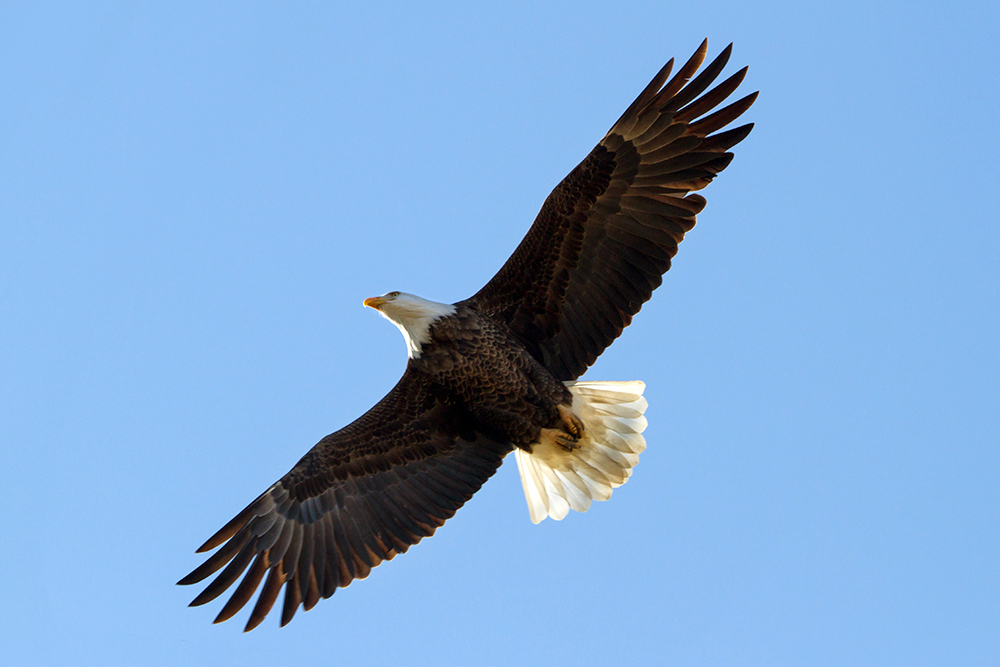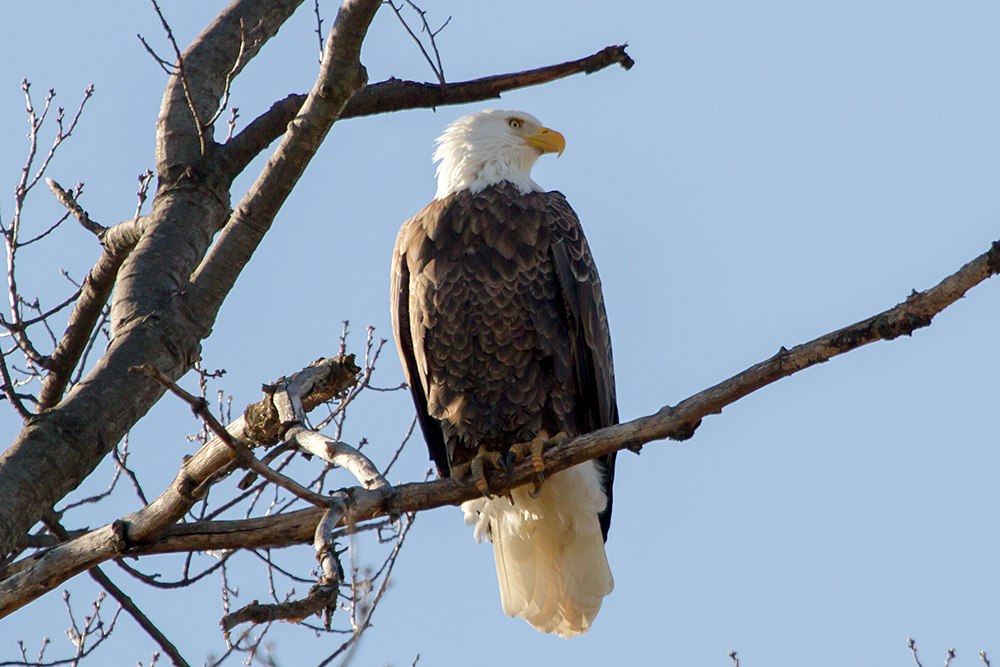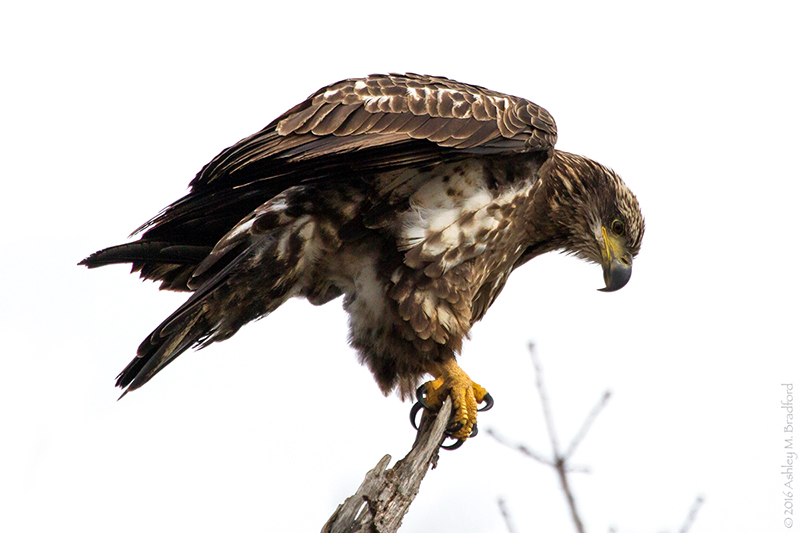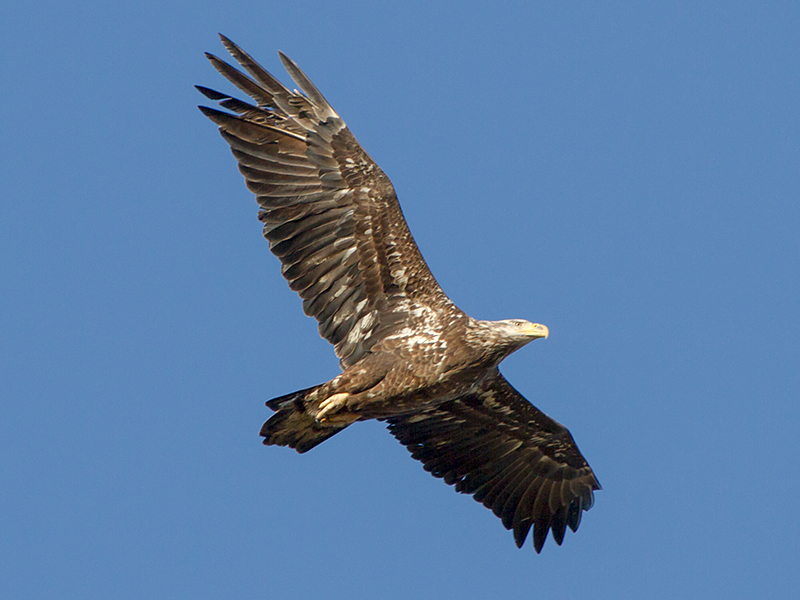| Year-round Resident |
Bald Eagles are year-round residents in the Washington metro area, and they sometimes are seen flying over or near Monticello Park. They are more likely to be seen in the spring than in the fall.
Where to See Them in the Park
Most Bald Eagles seen at Monticello Park are flying toward the Potomac River or Four Mile Run. On rare occasions, one will perch in a tree near the park.
Physical Description


The Bald Eagle is the national bird of the United States, and most people know what the adults look like. They have a brown body with a white head and tail. The head is not bald and featherless like a vulture's head. The word bald used to mean white, so the eagle is bald because of the head feathers it has rather than the head feathers it lacks. Bald Eagles have a large yellow bill, and they soar on broad, flat wings. The plumage of the sexes is similar, but the female is slightly larger and has a slightly longer bill. These differences can be difficult to see unless a male and female are next to each other.


Bald Eagles do not develop full adult plumage until their fourth or fifth year, after which the appearance of the plumage will not change. Before that, their body, underwings, and undertail have white feathering interspersed with the brown. The bill of some immature birds can be dark rather than bright yellow. A way to distinguish immature eagles from other raptors is by their large size and broad wings. Bald Eagles are considerably larger than any other hawk or vulture in the Washington Area.
Vocalizations
The Bald Eagle's call is a high-pitched chirp. It sounds as if it would be more appropriate for a shorebird than a large raptor. Hollywood has sometimes substituted the raspy scream of a Red-tailed Hawk in scenes showing a Bald Eagle.
Hear the calls of the Bald Eagle.Notes
Bald Eagles were on the Endangered Species List from 1978 to 2007, but they have made a considerable recovery. Their numbers had declined because of pesticides and other factors. They now are fairly common breeders in numerous places not far from Monticello. They build large stick nests, and they have often nested on utility poles visible from where Route 1 intersects the Beltway in Alexandria. You also can see nesting eagles around Dyke Marsh.
Origin of Names
Common Name: Bald means white. Eagle from the Latin aquila, which means eagle.
Genus Name: Haliaeetus means sea eagle. The genus name is misspelled — it should have only one "e". The species name of the Osprey is haliaetus, which is correctly spelled.
Species Name: Leucocephalus means white-headed.
Bald Eagle video footage
Return to the Index
